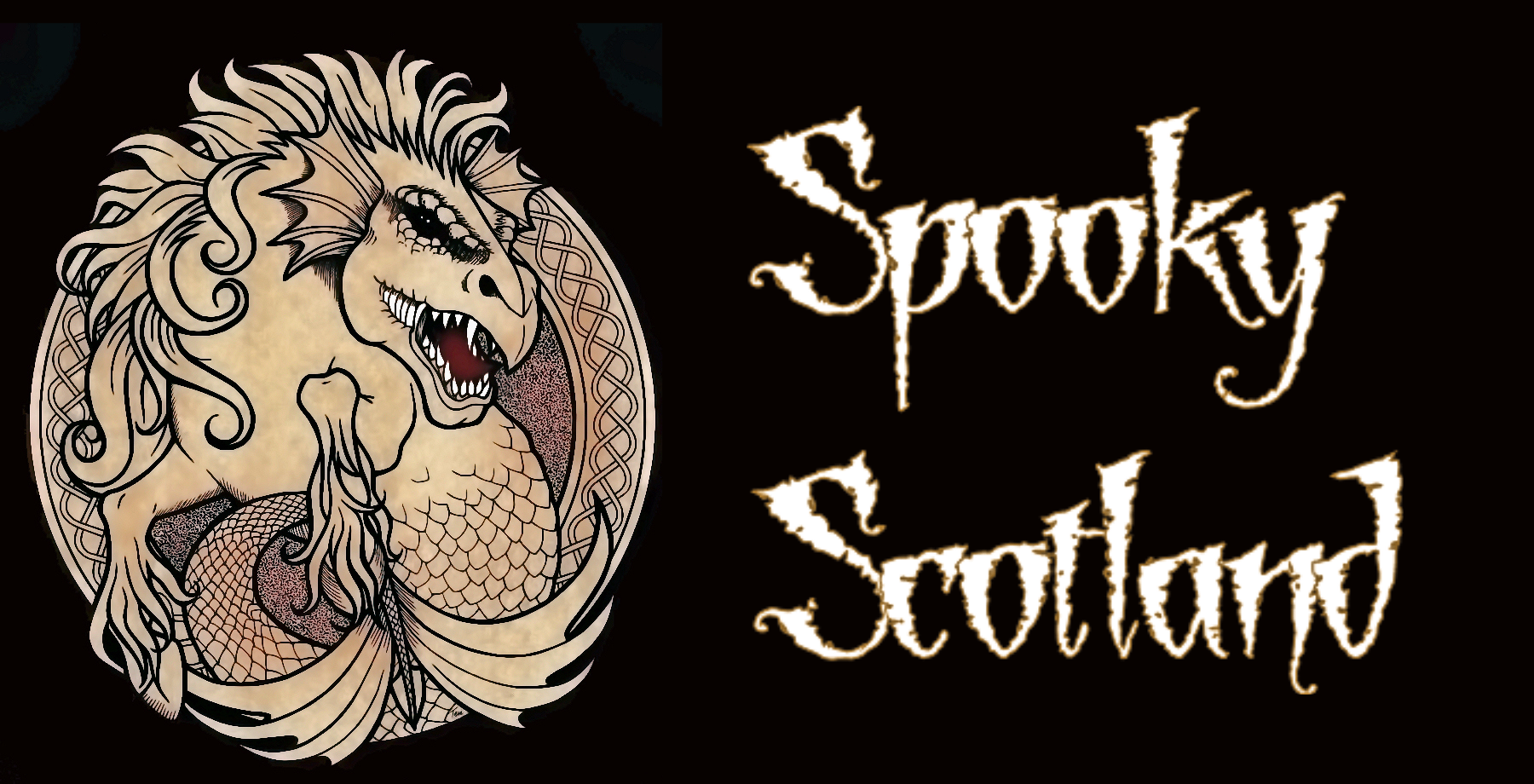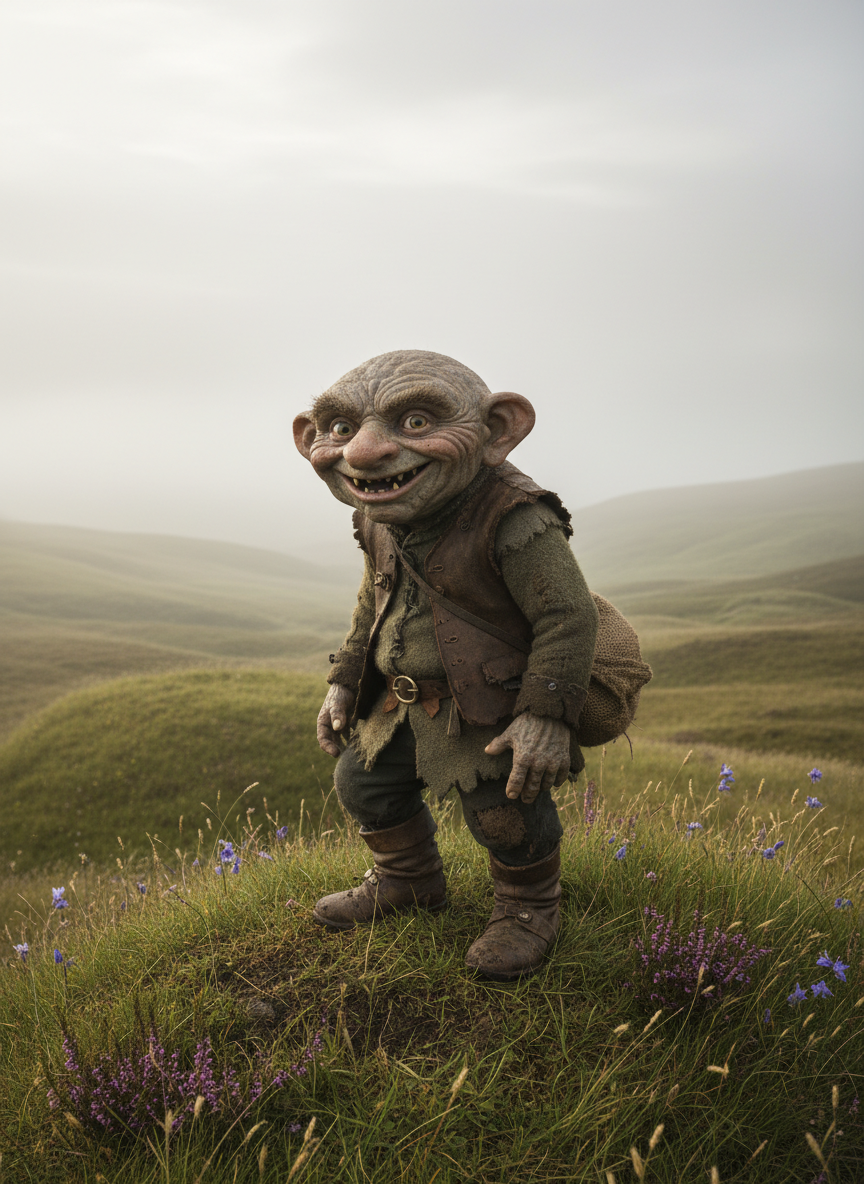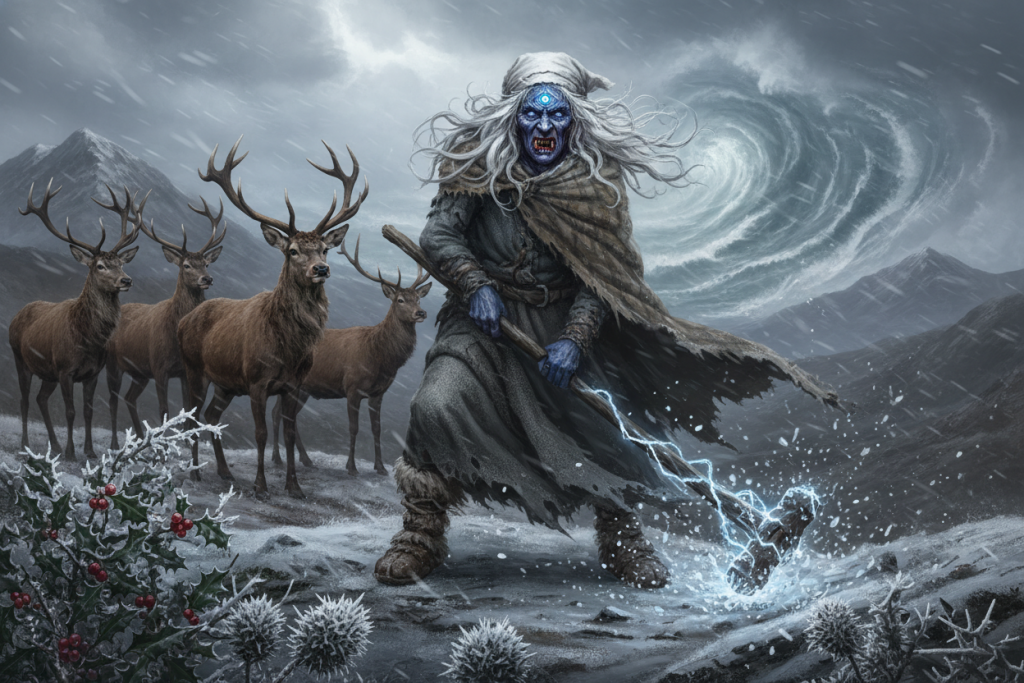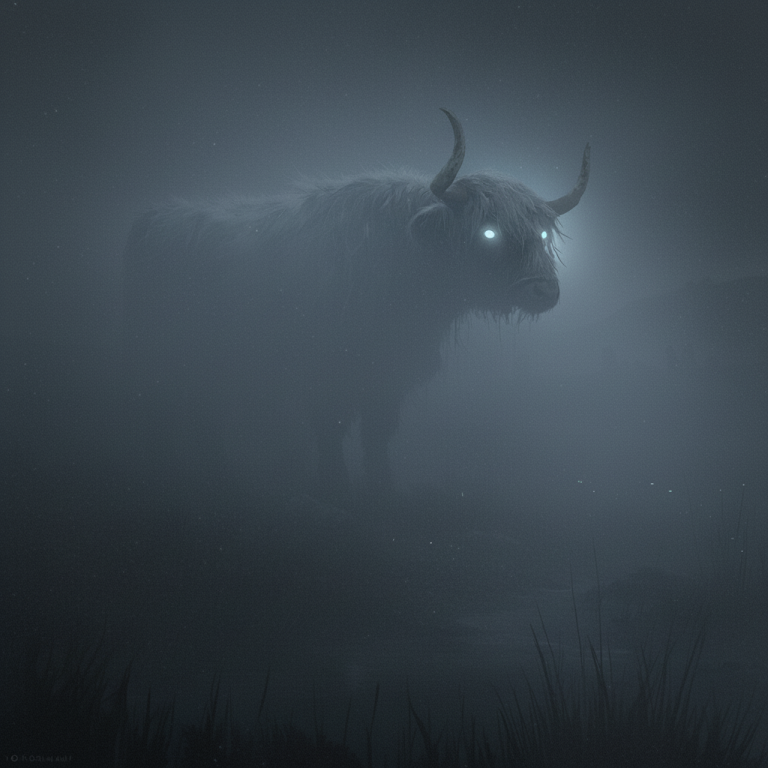Name pronunciation:
HOG-boon
General Information:
The Hogboon is a mound-dweller from Orkney and northern Scottish lore. The name comes from Old Norse haug-búi or haug-búinn, and Norwegian haugbonde, meaning mound-dweller or mound-farmer. In simple terms, the Hogboon is a protective spirit linked to a family and its farm. People believed he lived in, or under, a nearby mound. Therefore, he was treated with respect and small offerings to keep him friendly. Over time, the Hogboon is often confused or blended with the trow, another Orkney being, and with hill-people (högfolk) in Scandinavian tradition.
Appearance:
People rarely wrote down what a Hogboon looked like. Locals assumed everyone knew. Even so, sources suggest a small, wizened old man. He is brownie-like, and sometimes described as odd or old-fashioned in manner. In Shetland, related words like hjogfinni can mean a dwarf or brownie, or simply an unusual-looking person. Overall, the Hogboon is small but powerful, and certainly not to be trifled with.
Habitat:
The Hogboon lives in or under a howe (mound). This might be an ancient burial mound, yet it could also be a natural hillock. For example, Long Howe in Tankerness is a glacial mound associated with trows. Likewise, Trowie Glen in Hoy has geological mounds that people avoided after dark. In Orkney, many farms were linked to nearby mounds, and the Hogboon was thought to watch over the farmstead from there.
Behaviour:
The Hogboon is a guardian spirit tied to a family or farm rather than to the land alone. He expects courtesy, first pick of produce, and small offerings such as milk or ale poured on the mound. When respected, he brings good luck, helps around the holding, and keeps things running smoothly. However, when neglected or slighted, he becomes troublesome. Then tools go missing, milk sours, cows go lame, and storms or other misfortunes can follow. Importantly, he hates disturbance of his mound and reacts badly if anyone meddles with it.
Shape-shifting Ability:
There is no single standard for shape-shifting. In some Scandinavian parallels, mound-beings can appear in different guises or remain unseen. In Orkney tradition, the Hogboon usually appears as a small, elderly male figure, or else stays hidden while his actions are felt. Because “mound-dweller” is a broad category, stories vary by time and place.
Variant:
- Hogboy (Orkney): another common name for Hogboon.
- Trows (Orkney and Shetland): often associated with mounds and sometimes blended with Hogboon lore.
- Högfolk or hill-people (Scandinavia): elves or brownies linked to illness, luck, and charms.
- Shetland hjogfinni: a term for a dwarf/brownie or an odd, mysterious person; also used as an adjective meaning odd or lucky.
Location in Scotland:
- Orkney: Strongest traditions, including Maeshowe in Stenness, Long Howe in Tankerness, Trowie Glen in Hoy, and the isle of Fetlar’s Haltadans legend nearby in Shetland context.
- Caithness (Canisbay): Mire of Trowskerry linked to trow lore, showing how mound-dweller beliefs spread across the North.
- Rousay (Orkney): Taversoe Tuick excavation accompanied by local unease and storm lore.
Stories/ Sightings or Experiences:
Hogboon of Hellihowe
A farmer married a capable southern wife who had never heard of the Hogboon. She kept a spotless kitchen, scraped the porridge pot clean, and locked away all food. Crucially, she poured no milk or ale on the mound. At first, the Hogboon assumed the family was ill and had merely forgotten him. Then, after peeking in the window and seeing them well and hearty, he helped himself. Because the cupboards were locked and pots were clean, he grew annoyed. Soon, tools went missing, milk soured, cows went lame, and a general malaise fell on the farm. In despair, the family moved to a new holding. On arrival, they cheered—until the butter churn lid popped up and out jumped the Hogboon, grinning, “What a fine day to be flitting!” They learned, at last, that the Hogboon is attached to the family, not the land. From that day on, they offered him the first and best of their produce and lived in peace.
The Hogboy of Maeshowe
In 1861–62, James Farrer excavated Maeshowe in Stenness and recorded around 32 runic inscriptions. Amid the excitement, a curious note appeared in his report: locals said Maeshowe was once inhabited by a Hogboy of great strength. Newspapers also carried wild rumours—two female mummies and a ten-foot skeleton—none of which existed. Yet these claims show something important. When mounds were opened, old beliefs stirred. People feared that breaking into a howe would anger its guardian. In fact, the Orkneyinga saga mentions Norse warriors sheltering at Maeshowe during Yule, with two men suddenly going mad—a detail that saga readers may have understood as mound-breaking consequences. Even decades later, locals linked storms after excavations to disturbing ground that should have remained closed. In short, the Maeshowe Hogboy was a clear warning: respect the mound and the spirit who watches over it.
Purpose of the myth or Legend:
- Protection and respect: The Hogboon encourages care for the farm, the family, and the local landscape. Offerings and good manners keep life running smoothly.
- Social rules: The tradition teaches hospitality and generosity—always leave a portion for the unseen helper. Weddings, for instance, might include pouring wine on the house-mound “whar the Hogboon bides” for luck.
- Boundary-setting: The lore warns against disturbing mounds, whether ancient tombs or natural hillocks. Consequently, it helped preserve sites and shaped how people built around them.
- Coping with risk: Farming is uncertain. Tales of the Hogboon explain sudden losses or storms and offer a way to restore balance—through respect, ritual, and restraint.
- Cultural memory: Even when mounds vanish, stories keep them on the map. The Hogboon of Hellihowe/Cot Brae, for example, preserves the memory of a lost mound and its lessons.




